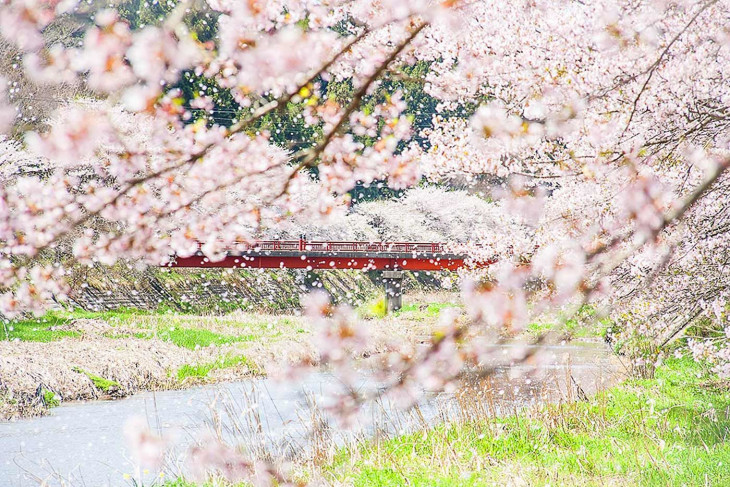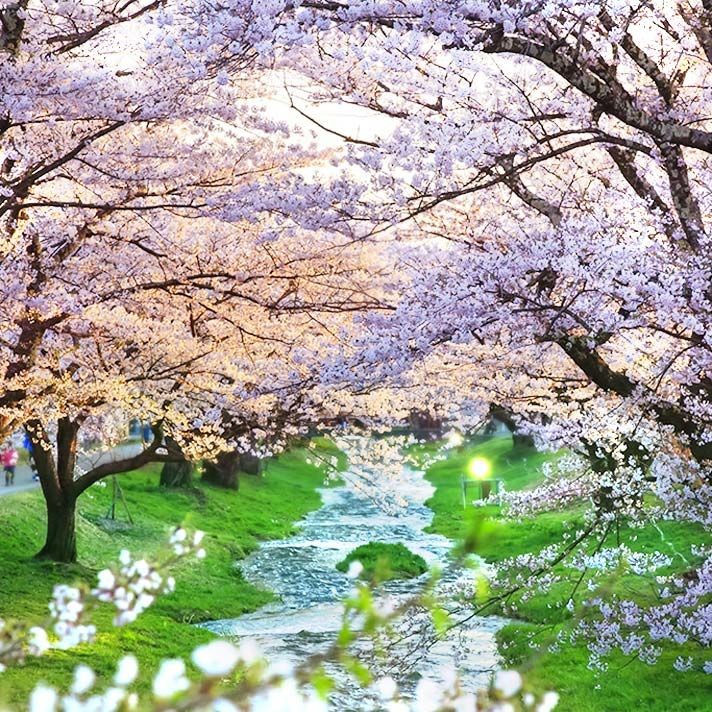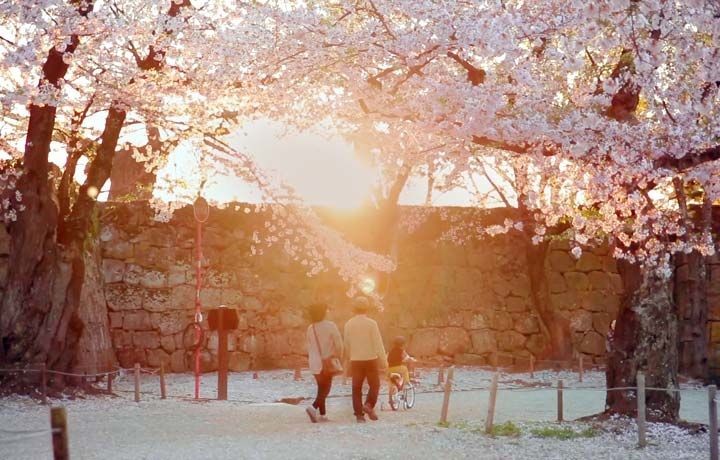Destination Spotlight
5 Things to Do in Kitakata
Located just 15 minutes north of the historic city of Aizu-Wakamatsu, Kitakata is a charming area with a rich history, most notable for its traditional quarter and seasonal nature spots.If you’re visiting Kitakata, be it for cherry blossoms, the green season, or autumn colours, this is a great chance to explore one of Japan’s great ‘ramen cities’, with over 100 restaurants serving the famous Kitakata ramen.Here are some ideas for things to do:Wander the old townDuring the Meiji and Taisho eras, Kitakata experienced a construction boom, leaving behind an impressive legacy of around 4,200 kura warehouses still standing today. These buildings were originally used by brewing and lacquerware industries, but they also symbolized wealth and pride for local families. Building a kura was seen as a mark of success and remains deeply tied to Kitakata’s cultural identity.Different districts showcase unique designs. If you’re keen to learn more, the visitor’s centre Kitakata Kura no Sato offers a preserved collection of kura and other traditional architecture within a 4,500-square-metre site. Ten restored buildings include warehouses for miso, grains, shops, and even residences, as well as houses of former local officials.These kura now serve as exhibition spaces, displaying everything from Aizu dye stencils and historic photographs to stories of local figures and movements from the Meiji era. Wandering from warehouse to warehouse is a great way to immerse yourself in traditional Japanese culture.Nicchusen Weeping Cherry BlossomsThe Nicchusen cherry blossoms offer one of Fukushima’s most memorable springtime experiences. The trees line a three-kilometre stretch of the former Nicchu Line railway, which once connected Kitakata with Atsushio Onsen. Today, the old tracks have been transformed into a walking and cycling path that comes alive with thousands of cherry blossoms, creating a tunnel of pink and white each spring. Blooming typically coincides with Golden Week in late April to early May.An old steam locomotive remains on display midway along the path, providing a nostalgic backdrop framed by blossoms. On clear days, you can even make out the silhouette of Mt. Bandai to the east.With different varieties of cherry trees, each section offers unique views and photo opportunities. Despite its popularity, the path is so long that there are still plenty of places to stop and relax, and food stalls are usually abundant during blooming season.Sannokura Plateau Sunflower Fields & Ski ResortIn summer, the ski slopes of Sannokura Plateau are transformed into expansive fields of sunflowers. Around 1.5 million flowers bloom across 5.4 hectares of land, divided into three main areas that flower at slightly different times. This staggered blooming means visitors can enjoy the fields from early August through early September. The view stretches across the Aizu Basin, giving the fields a broad and open backdrop.The site is also known for its canola flowers, which bloom between March and June. The yellow blossoms spread across the same slopes, offering another seasonal landscape before the sunflowers appear. Signs at the entrance provide guidance on the best viewpoints and current blooming conditions, while wooden observation decks on the west and south hillsides give elevated perspectives over the fields.In winter, the area reopens as a ski resort, hosting evening sessions for beginners and intermediate skiers.Shingu Kumano ShrineAt the heart of Shingu Kumano Shrine stands an 800-year-old ginkgo tree, rising 30 metres high with roots over eight metres around. Designated a Natural Monument of Kitakata City, the tree is the site’s most striking feature. Each autumn, its leaves turn a vivid yellow, covering the shrine grounds in a golden carpet. In November, evening illuminations draw visitors from all over Tohoku.Behind the ginkgo is the Nagatoko, or ‘long floor,’ a large thatched-roof worship hall built between the Heian and Kamakura periods. Supported by 44 pillars and open on all sides, it was historically used for ascetic training and kagura dance rituals. The hall has been designated a National Important Cultural Property.The shrine also preserves treasures such as a copper pot once used for offerings, Buddhist statues, and guardian figures, many of which are displayed in the treasure hall.Savour Kitakata ramenKitakata ramen is one of Japan’s ‘big three’ ramen styles, alongside Sapporo and Hakata, and for many people is one of the highlights of visiting the area. Known for its soy sauce-based broth and thick, chewy noodles with a high water content, the style originated at Genraiken in 1927, when Ban Kinsei, a Chinese immigrant, began selling noodles based on his own recipe. He later opened a shop and shared his methods freely, helping spread the dish across the city.Today, Kitakata has the highest number of ramen shops per capita in Japan. Local eateries often open as early as 7 a.m., serving bowls to factory workers, farmers, and travellers. Among the most famous are Genraiken, Makoto Shokudō, and Bannai Shokudō, each offering slightly different variations, from soy sauce-based soups to salty broths topped with generous slices of chashu pork.The long tradition of soy sauce brewing here, and access to clear mountain water, also shapes the flavor of the ramen. Local pride and the work of ramen associations has helped establish Kitakata as a must-visit ramen destination.Kitakata’s ramen shops are as much a cultural experience as a meal, reflecting Kitakata’s history, resources, and community spirit.One of several bars at Aizu HomareTour a sake breweryA trip to Kitakata wouldn’t be complete without a visit to a sake brewery. Two potential options are Yamatogawa and Aizu Homare, both of which have long histories and welcome visitors for tastings and tours.Yamatogawa Brewery, founded in 1790, uses pure mountain water from Mt. Iide and high-quality rice grown on its own fields and by local farmers. The interior features a museum telling visitors about its long history. Next to the brewery, the Northern Museum displays Edo-era earthen storehouses and explains how sake production has evolved. Tours and tastings are free, and the museum is open daily from 9:00 to 16:30.Aizu Homare Brewery, established in 1918, is known for its award-winning sake and also benefits from soft spring water from Mt. Iide. Visitors can take guided tours, watch a video on sake making, and sample over 10 varieties of sake, liqueur, and shochu. The brewery grounds include a large Japanese garden, overlooked by a tatami room where guests can sit, enjoy sake, and take in the seasonal scenery.Looking for more information? Check out our: Access guide for getting to Fukushima Itineraries page for trip ideas Activities page for tour experiences with English support






